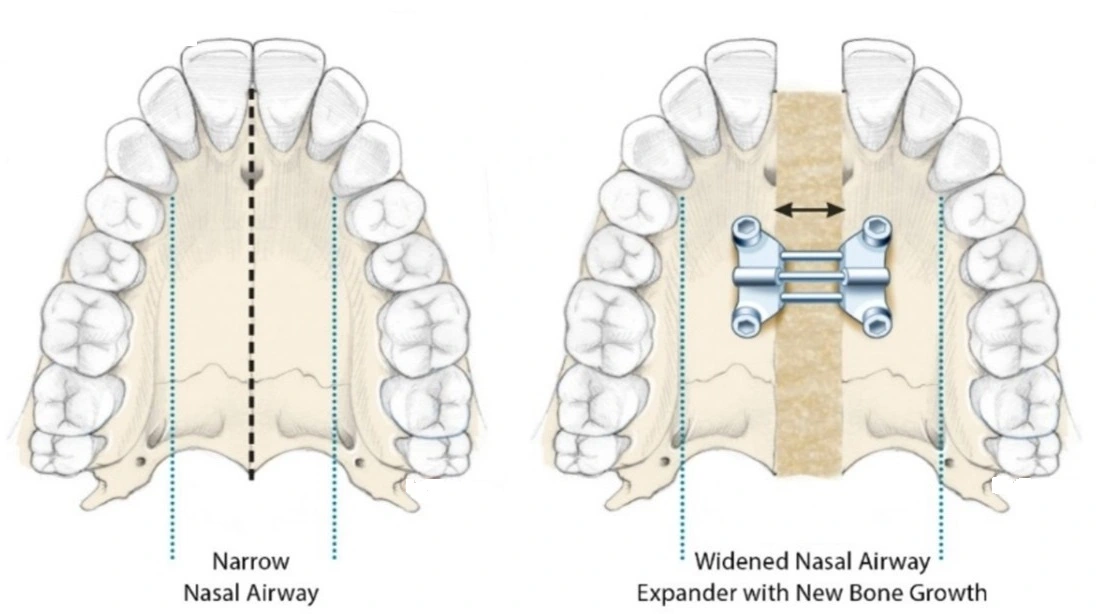Benefits of Maxillary Skeletal Expansion
- Open nasal passages.
- Decreases nasal airway resistance.
- Reduction of sleep apnea symptoms and complications.
- More space for the tongue.
- Create space for crowded teeth.
- Correct crossbites.
- Less pain and recovery time compared to jaw surgery.

